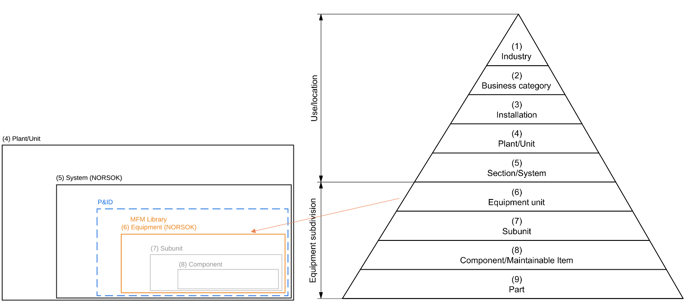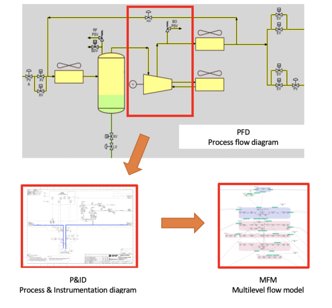Why are we using standardized functional model library components?
Kairos Re-use Model Library
To ensure an effective modelling effort, Kairos standard model library components are used. This is vital to ensure that past design- and operational-experience and knowledge is captured and re-used in new or modified design, and from project to project. In addition, operational teams develop experience when operating an asset. The library model elements includes operators' experience as well. Therefore, our model library elements come configured with the following knowledge:
- Failure modes
- Corrective actions
- Manual verification steps
- Mitigation proposals
This way we can ensure that design expertise and operational experience is combined and ready for re-use across projects and operational assets. This is knowledge sharing.
FUNCTIONAL BREAKDOWN
The standard ISO 14224:2016: Petroleum, petrochemical and natural gas industries — Collection and exchange of reliability and maintenance data for equipment, provides a comprehensive basis for the functional breakdown.
Functional breakdown of model library
This figure shows our current breakdown when modelling and how our functional model libraries fits into the ISO standard. This is vital when showing how faults may propagate from equipment to equipment and further into systems and plants. Functional models will also be grouped according to P&ID to facilitate easy navigation when in P&ID view.
Each library model component is a functional model of a generic equipment or process area
- Based on mass and energy balances.- Include full FMECA details.
- Include operational experience (from operational procedures, etc.)
Example: Modelling a compressor
Steps to build a functional model
- Start with the P&IDs
- Modeling work will focus on meeting the plant- and system-goals, and functions from design
- Use model components from our standard re-use library
- Add/build the structure of the plant design
